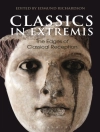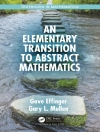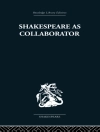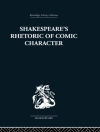American Women’s Regionalist Fiction: Mapping the Gothic seeks to redress the monolithic vision of American Gothic by analyzing the various sectional or regional attempts to Gothicize what is most claustrophobic or peculiar about local history. Since women writers were often relegated to inferior status, it is especially compelling to look at women from the Gothic perspective. The regionalist Gothic develops along the line of difference and not unity—thus emphasizing regional peculiarities or a sense of superiority in terms of regional history, natural landscapes, immigrant customs, folk tales, or idiosyncratic ways. The essays study the uncanny or the haunting quality of “the commonplace, ” as Hawthorne would have it in his introduction to The House of the Seven Gables, in regionalist Gothic fiction by a wide range of women writers between ca. 1850 and 1930. This collection seeks to examine how/if the regionalist perspective is small, limited, and stultifying and leads to Gothic moments, or whether the intersection between local and national leads to a clash that is jarring and Gothic in nature.
Daftar Isi
Introduction.- New England Gothic: Resisting Nation.- Nancy Sweet, “Gothic Woods and the Shining City on a Hill: Harriet Prescott Spofford’s ‘Circumstance’”.- Melissa Mc Farland Pennell, “New England Gothic/New England Guilt: Mary Wilkins Freeman’s Giles Corey and the Salem Witchcraft Episode”.- Cécile Roudeau, “Sarah Orne Jewett’s New England Gothic: ‘Lady Ferry’ and the Uncanny Durability of Colonial History”.- New England’s Landscapes and the Eco-Gothic.- Rita Bode, “Local Habitations as Gothic Terrain in Rose Terry Cooke”.- Daniel Mrozowski, “Hallowed Ground: The Gothic New England of Sarah Orne Jewett and Mary Wilkins Freeman”.- Cynthia Murillo, “Life By Landscape: The Sublime and the Spectacle of Transcendence in the Gothic Fiction of Edith Wharton”.- Southern Gothic: Folklore, Superstition, Race.- Alicia Mischa Renfroe ‘That Dim Abode’: Uncanny Region in Rebecca Harding Davis’s “The Tragedy of Fauquier”.- Wendy Ryden, “Gothic Chopin: Negotiating Realism’s Divide in Bayou Folk”.- Ellen Weinauer, “The Gothic and the “Southern Lady”: Catherine Warfield’s The Household of Bouverie”.- Jeffrey Weinstock, “Haunted Homesteads: E.D.E.N. Southworth’s Dual Gothic”.- Valerie Levy, ““Hoodoo and Voodoo in Zora Neale Hurston’s Gothic Folklore”.- West Coast Gothic.- Lesley Ginsberg, “Mary Austin’s California Gothic”.- Dara Downey, “Emma Frances Dawson’s Urban California Gothic”.- Laura Laffrado, “’It Will Haunt the Reader after the Others have Faded into the Mists’: The Gothic West of Ella Rhoads Higginson’s ‘In the Bitter Root Mountains’”.- Laura Mielke, “Zitkala Sa’s Defiant Gothicism”.- Midwest Hauntings.- Monika Elbert, “Alice Cary and Margaret Fuller: Mundane Musings and Great Lakes Hauntings”.- Stéphanie Durrans, “Specters of the Great Plains: Cather’s My Antonia as a Gothic Regionalist Novel”.- Jane Anne Fleming, “Gothic Spaces and the “Homeland”: Resisting Exceptionalism in Constance Fenimore Woolson’s Tales of the Great Lakes and Reconstruction”.
Tentang Penulis
Monika Elbert is Professor of English and a Distinguished University Scholar at Montclair State University, USA. She is editor of the Nathaniel Hawthorne Review and her recent publications include: Hawthorne in Context (2018) and, co-edited with Wendy Ryden, Haunting Realities: Naturalist Gothic and American Realism (2017).
Rita Bode is Professor of English Literature at Trent University, Canada. Her co-edited collections include L.M. Montgomery and the Matter of Nature(s) (2018) and L.M. Montgomery’s Rainbow Valleys: The Ontario Years, 1911-1942 (2015).












